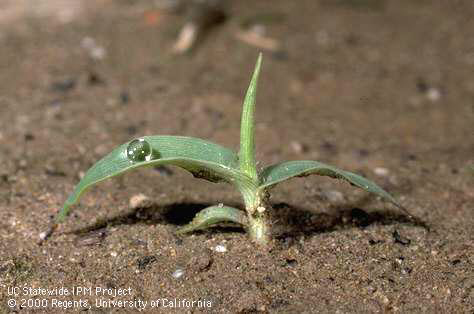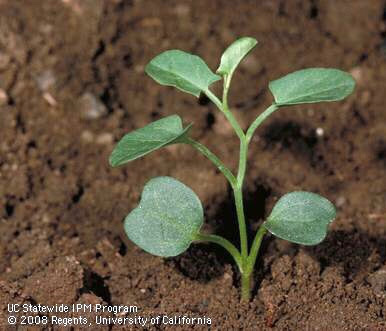Eeek, it's weed season already!
 |
Crabgrass is easiest to eradicate when it's about this size. (Photo by Jack Kelly Clark, courtesy UCIPM) |
 |
Bedstraw is the scourge of pet owners. (Photo: Kathy Morrison) |
The only time I envy gardeners living in snow country is late winter. They have white landscapes to look at. We have weeds.
The mild temperatures and just enough rain this time of year have weeds popping out all over. Some aren't even noticeable, tucked under larger plants or hiding for now under loose mulch. But they're there, and the sooner they're dealt with the better.
Why are weeds bad? Well, they suck up nutrients and water that other plants need. They're so well adapted that they spread like crazy. And they provide early food for that other scourge of the garden: "bad guy" insects. I was amazed to learn how many pests migrate from weeds to good plants during the spring.
So keep on top of the weeds and you keep on top of two problems. They're never completely eliminated, but at least they can be kept under control. |
Little bittercress produces pods that can spread seeds several feet when they pop open. (Photo: Kathy Morrison) |
Here are just five currently sprouting weeds that are crucial to hoe or dig out early:
1) Catchweed bedstraw (Galium aparine), also called cleavers and stickyweed, among others. Its sticky hairs catch on everything: T-shirts, socks, cat fur, dogs' tails, you name it. And it spreads that way. If allowed to grow large, it forms little burrs that are even harder to pull out of fur or socks.
2) Little bittercress (Cardamine oligoosperma), also known as shotweed or snapweed. I call this weed "pop-bead plant" because of the way the seeds explode out of their seed pod when you so much as brush past it. Dig it up before or while it's flowering to prevent it spreading far and wide.
 |
Puncturevine with flower. (Photo by Jack Kelly Clark, courtesy UCIPM) |
4) Crabgrasses (Digitaria ssp.) The smooth-leaf one (Digitaria ischaemum) is most often found in turf, the one called large crabgrass (Digitaria sanguinalis) most often grows in gardens. Get 'em out while they're seedlings and you'll avoid having those big mats of soil-hogging grasses later.
 |
This is a bindweed seedling. Don't let it get much bigger. (Photo by Jack Kelly Clark, courtesy UCIPM) |
Of course, there are many, many more. To identify a weed, check the UC IPM Weed Gallery. Just don't let the (ahem) grass grow under your feet before getting those weeds gone.


Comments
Post a Comment